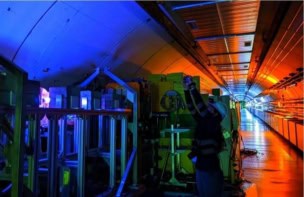
India’s third Moon mission has been successfully launched today at 14:35 local time from the Satish Dhawan Space Centre in Sriharikota in the state of Andhra Pradesh. Costing $75m, Chandrayaan-3 consists of lunar lander and rover and was fired into space by the country’s Launch Vehicle Mark 3 rocket.
India’s first mission to the Moon – the Chandrayaan-1 orbiter – was launched in 2008 and featured 11 payloads, six of which were built by outside countries. The follow-up mission – dubbed Chandrayaan-2 – was launched in 2019 and consisted of an orbiter as well as lander and rover.
While the orbiter was successfully inserted into lunar orbit, the lander, dubbed Vikram, failed to touch down softly on the Moon due to a breaking issue as it neared the surface. Its planned target was between the craters Manzinus C and Simpelius N, close to the lunar south pole.
With Chandrayaan-3, India is now trying again to land on the Moon in a similar spot as the Chandrayaan-2 mission with a rebuilt Vikram lander that contains a six-wheeled rover named Pragyaan. India’s Chandrayaan-2 mission launches to the Moon
The mission is now making its way to the Moon and if all goes to plan then the landing is planned for 23 or 24 August. If that is successful, the lander will then release the rover to make a series of sorties over 14 Earth days with a range of about 500 m. This will allow it to study the lunar rocks and soils with its five instruments that include laser and X-ray spectrometers.
If successful, India will join China, Russia and the US in successfully landing a craft on the Moon. Yet India would be the first nation to land at the lunar south pole.



